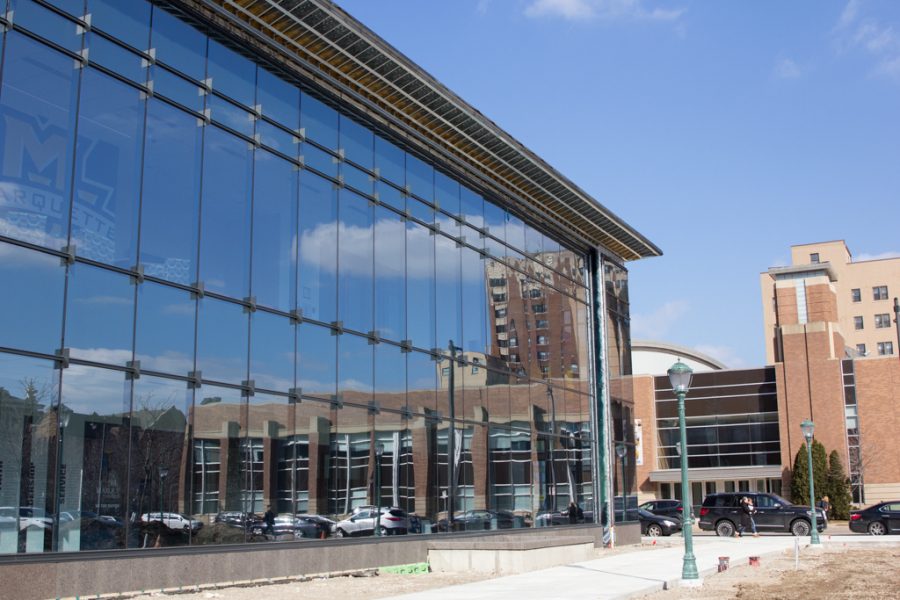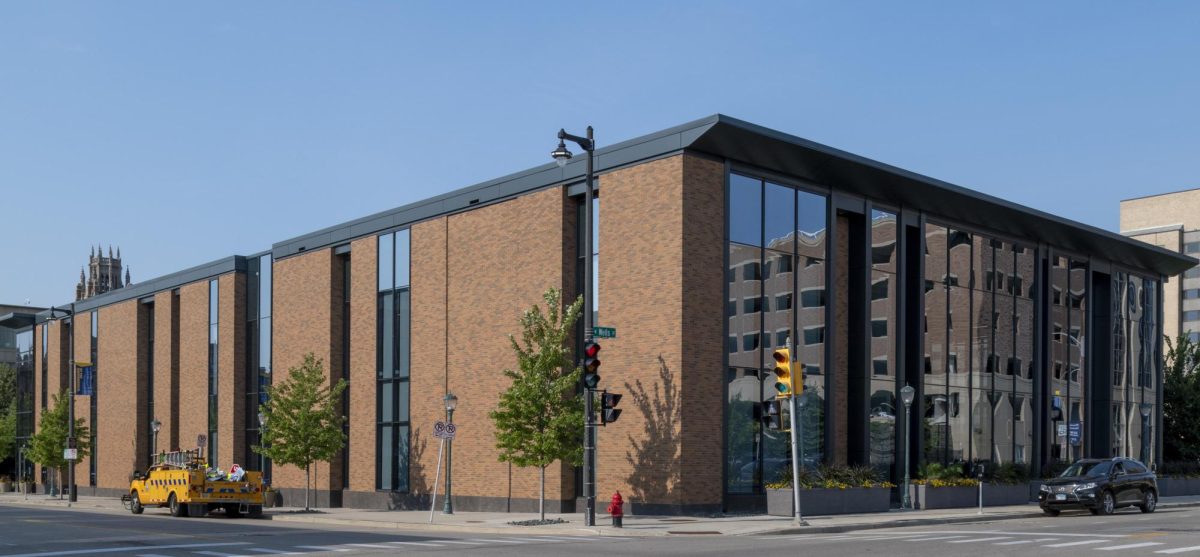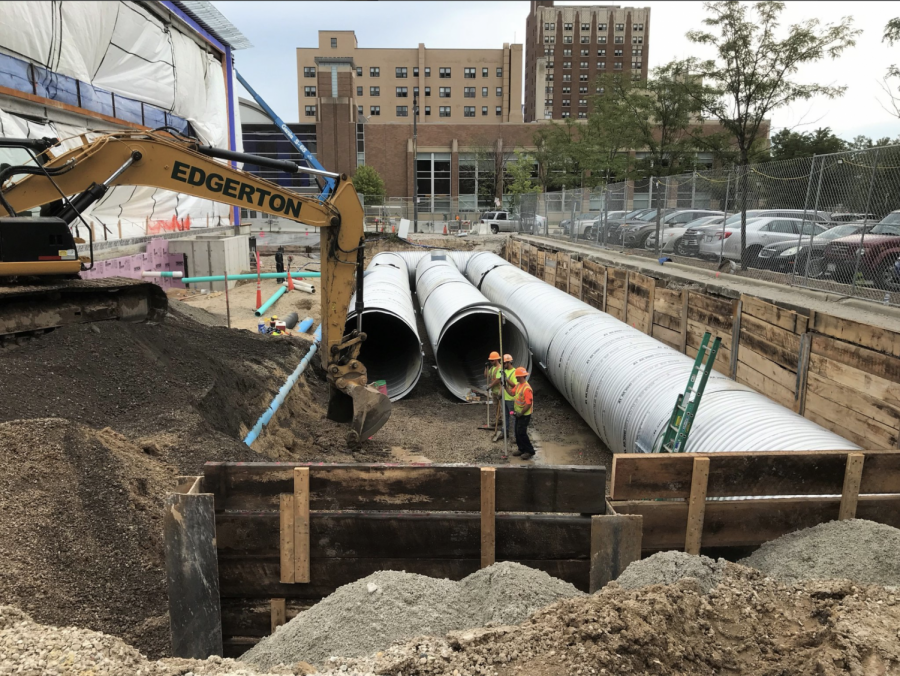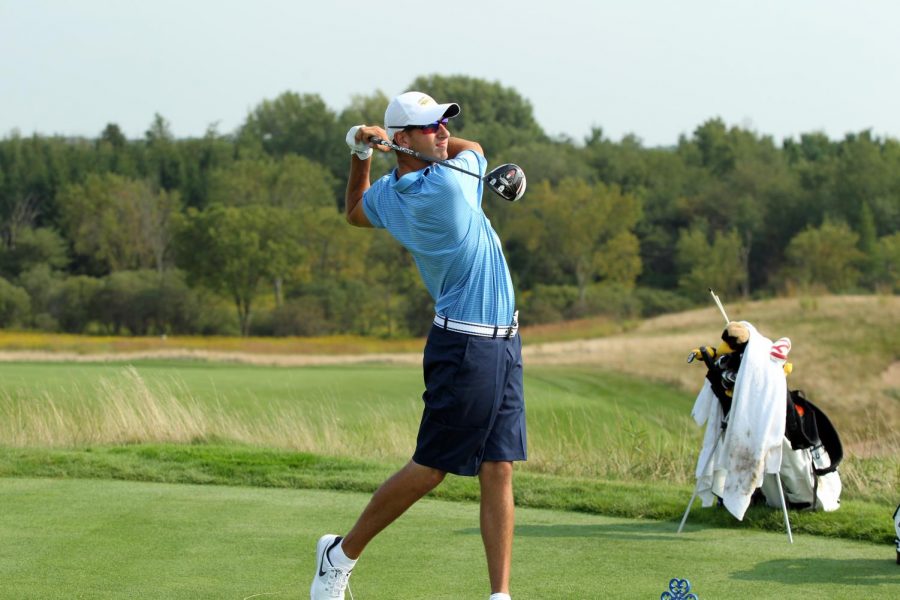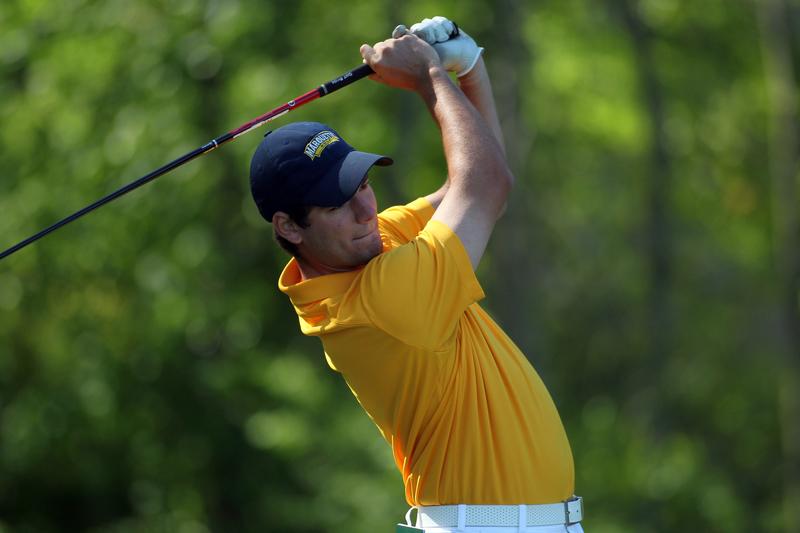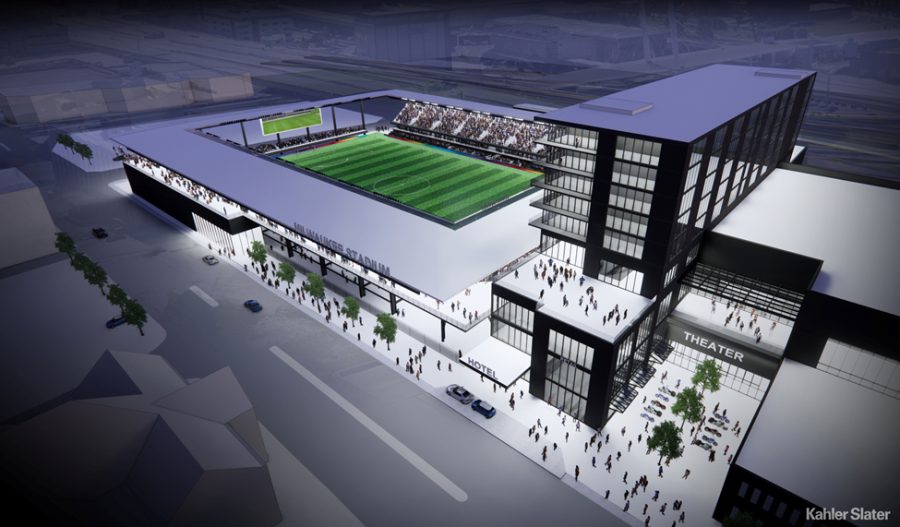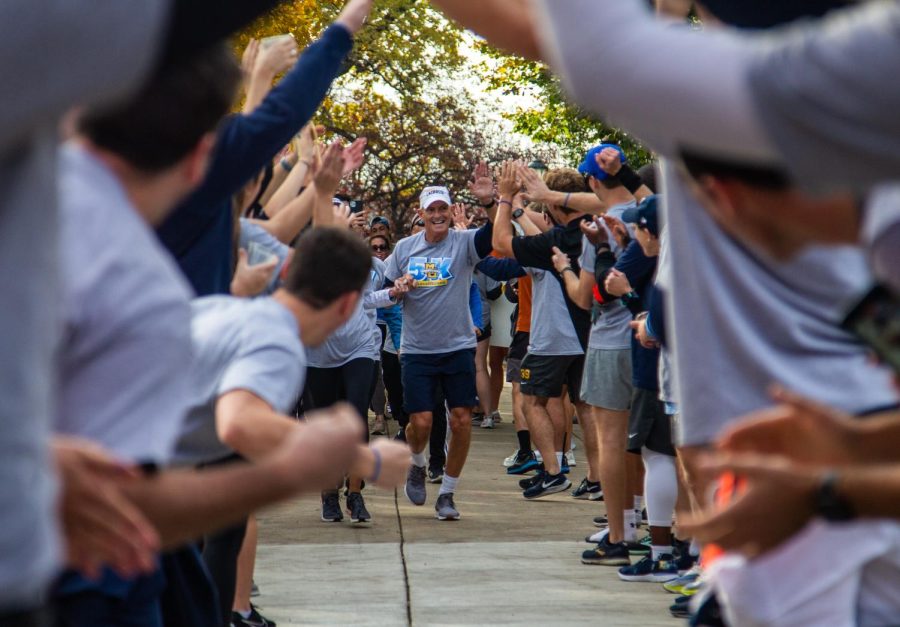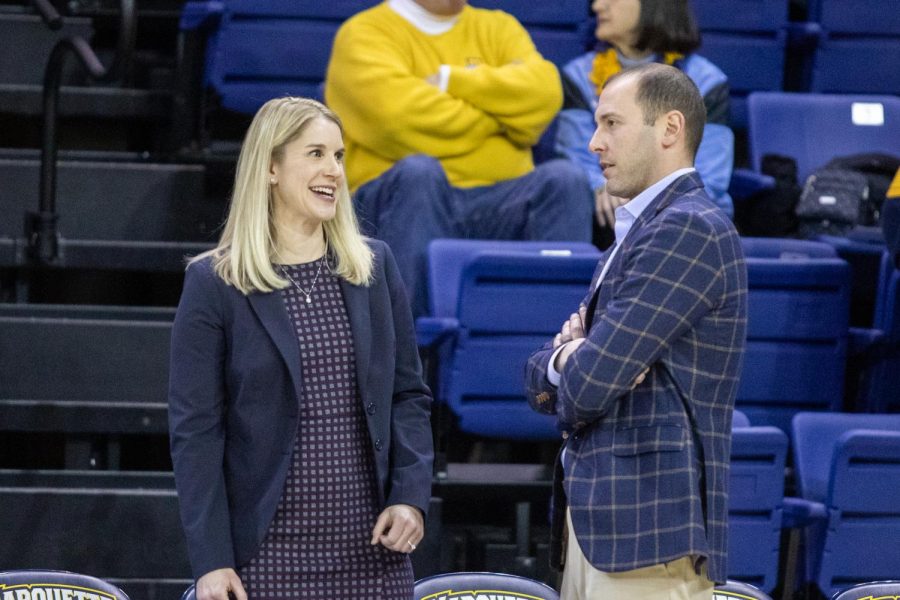Marquette University’s new $24 million, 46,000-square-foot Athletic and Human Performance Research Center opened March 4.
The facility, which is located on the southwest corner of 12th and Wells streets, features a weight room large enough to accommodate lacrosse and soccer teams, as well as locker rooms for both lacrosse programs and men’s golf.
“We’re really excited about it, just for our opportunity to continue to grow,” golf head coach Steve Bailey said. “(The facility brings) every piece of the puzzle that we really needed to kind of get that upper echelon of what the Midwest programs have.”
The golf team had space in the Marquette Gym, which opened in 1922, before moving to the AHPRC.
“You look at the designs and all the plans, and you say, ‘This is going to be cool,'” senior golfer Oliver Farrell said. “When you step in it, it was incredible to see and so much better than everyone expected.”
Men’s and women’s lacrosse previously did not have locker rooms and had team offices in the 707 Building. The lacrosse teams also had to do weight training in shifts at the Al McGuire Center because of limited space.
Soccer, cross country and track and field still occupy the 97-year-old Marquette Gym.
Aurora Health Care was first announced as a partner to cover costs, but the health care provider backed out of the deal last May. University President Michael Lovell said the university had “been having dialogue with a number of other partners” last August in a press conferance. More than six months later, the facility does not have any partners.
Marquette’s website said the facility has 5,400 square feet dedicated to research on “elite athletic performance, human performance, rehabilitation, fitness data analytics and other related disciplines.”
The facility is significantly scaled back from the initial plans for the Athletic Performance Research Center, which was supposed to be 250,000 to 300,000 square feet. It would have included a field house large enough to host indoor lacrosse games southeast of campus.
“At least we get to have it for a period of time,” Farrell said. “We’re very thankful for the people that made it possible. … It’ll be an exciting eight or nine weeks in here.”
Locker rooms and an indoor track for the track and field program were also supposed to be part of the initial building, but athletic director Bill Scholl said these were “no longer necessary” when the university announced the smaller location.
Scholl has said multiple times this is just the first phase of the AHPRC, but no timeline or details have been released regarding future phases.

